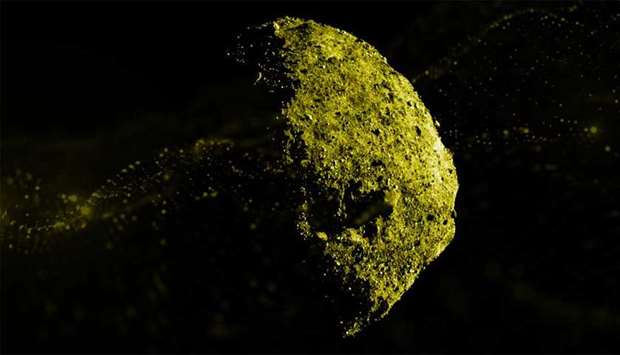Shortly after NASA's OSIRIS-REx spacecraft arrived at asteroid Bennu, an unexpected discovery by the mission's science team revealed that the asteroid could be active, or consistently discharging particles into space.
The ongoing examination of Bennu - and its sample that will eventually be returned to Earth - could potentially shed light on why this intriguing phenomenon is occurring.
The OSIRIS-REx team first observed a particle ejection event in images captured by the spacecraft's navigation cameras taken on Jan. 6, just a week after the spacecraft entered its first orbit around Bennu.
At first glance, the particles appeared to be stars behind the asteroid, but on closer examination, the team realised that the asteroid was ejecting material from its surface. After concluding that these particles did not compromise the spacecraft's safety, the mission began dedicated observations in order to fully document the activity.
The team observed the three largest particle ejection events on Jan. 6 and 19, and Feb. 11, and concluded that the events originated from different locations on Bennu's surface. The first event originated in the southern hemisphere, and the second and third events occurred near the equator. All three events took place in the late afternoon on Bennu.
The team found that, after ejection from the asteroid's surface, the particles either briefly orbited Bennu and fell back to its surface or escaped from Bennu into space. The observed particles travelled up to 10 feet (3 meters) per second, and measured from smaller than an inch up to 4 inches (10 cm) in size. Approximately 200 particles were observed during the largest event, which took place on Jan. 6.
Bennu's activity presents larger opportunities once a sample is collected and returned to Earth for study. Many of the ejected particles are small enough to be collected by the spacecraft's sampling mechanism, meaning that the returned sample may possibly contain some material that was ejected and returned to Bennu's surface. Determining that a particular particle had been ejected and returned to Bennu might be a scientific feat similar to finding a needle in a haystack.
The material returned to Earth from Bennu, however, will almost certainly increase our understanding of asteroids and the ways they are both different and similar, even as the particle ejection phenomenon continues to be a mystery whose clues we'll also return home with in the form of data and further material for study.
Sample collection is scheduled for summer 2020, and the sample will be delivered to Earth in September 2023. (QNA)



